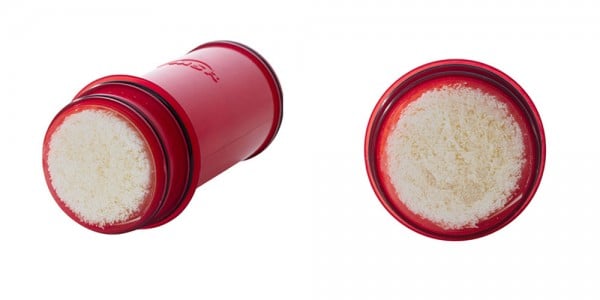Water 101: Exciting Advancements in Purifiers
If you’re headed into a popular wilderness area or traveling abroad, especially to a developing country, it’s important to purify your water. Using a water purifier, as opposed to a traditional microfilter, adds defense against viruses—microorganisms that are too small for microfilters to remove. This is important because viruses become an added risk where human waste can pollute the water supply.
But seasoned backpackers know that purifying your water can be a major hassle. Traditionally, the process has required two-steps: Using a microfilter first to filter out sediment and particulates (this also removes bacteria and protozoa). Then, using a purifying agent, such as chemical tablets or UV light, to neutralize the threat of viruses.
That was the case—until recently.
New exciting advancements in backcountry purifiers are making it possible to physically remove all three classes of harmful microbes in one easy step. Why has it taken long so to create a device capable of this? Well, for starters, the virus is no ordinary bug.
Viruses: the elusive bug
Viruses are such a headache for water treatment scientists and so hard to remove for one simple reason: They’re tiny, even on the microscopic scale. Viruses are one-tenth the size of bacteria—so small, in fact, that scientists debate whether they’re organisms at all, made only of a protein shell and DNA. Because of this, viruses slip through the technologies used by microfilters. Microfilters are great for use in pristine wildernesses where human traffic is low. But in places where humans don’t practice good hygiene near water supplies, microfilters just don’t offer full defense.
The challenges of making a device that removes viruses
Creating a device that removes viruses yet is practical for backcountry travelers (i.e., small, fast and light) is an engineering feat. That’s why chemical treatments and UV light have been the go-to methods—they deactivate viruses by scrambling their DNA. However, UV doesn’t work reliably in water that has particulates, like sediment. And chemicals offer better, but not ideal defense in cloudy water. It’s for this reason that you must often go through the two-step hassle: prefiltering then purifying.
Another challenge to creating a device that simply pulls out viruses is the current state of microfilter technologies. The most reliable microfilters out there use filter media that physically block the threats via small pores, letting only clean water through. However, these technologies haven’t been able to feature pores small enough to consistently block viruses and maintain reasonable flow and capacity. Other filters employ an adsorptive filter media (using attraction to grab the microbes as they pass by), but those have vulnerabilities that make them risky in highly contaminated water.
To get around all this, companies have tried using two technologies in one device. An old MSR SweetWater product, for example, included a glass fiber microfilter followed by penta-iodine disinfection cartridge. But in the end, it was dropped from the line.
New purifiers that are rewriting the rules
Fortunately, new exciting technologies are rewriting these rules. Mechanical purifiers, also called ultra-filters, are the forefront of water purification. These advanced devices, like MSR’s Guardian purifier, use technology adapted from the medical industry. And they offer big advantages for international and backcountry travelers. The technology—hollow fibers adapted from kidney dialysis—features pores small enough to consistently block viruses. With the right engineering (and it takes a lot), these fibers can be built into devices that are practical for backcountry users.

It takes a great deal of R&D to create the fibers and integrate them into purifiers that are reliable in various water types. But the advantage is revolutionary efficiency and less hassle, not to mention money saved from not buying bottled water overseas. At MSR, we’re excited to put this new technology to use.
Mechanical purifiers offer the benefits of a microfilter with the added protection of a purifier. And with such performance, they may soon replace all of the treatment solutions on your shelf—delivering the versatility you need to stay safely hydrated practically anywhere you decide to roam.
